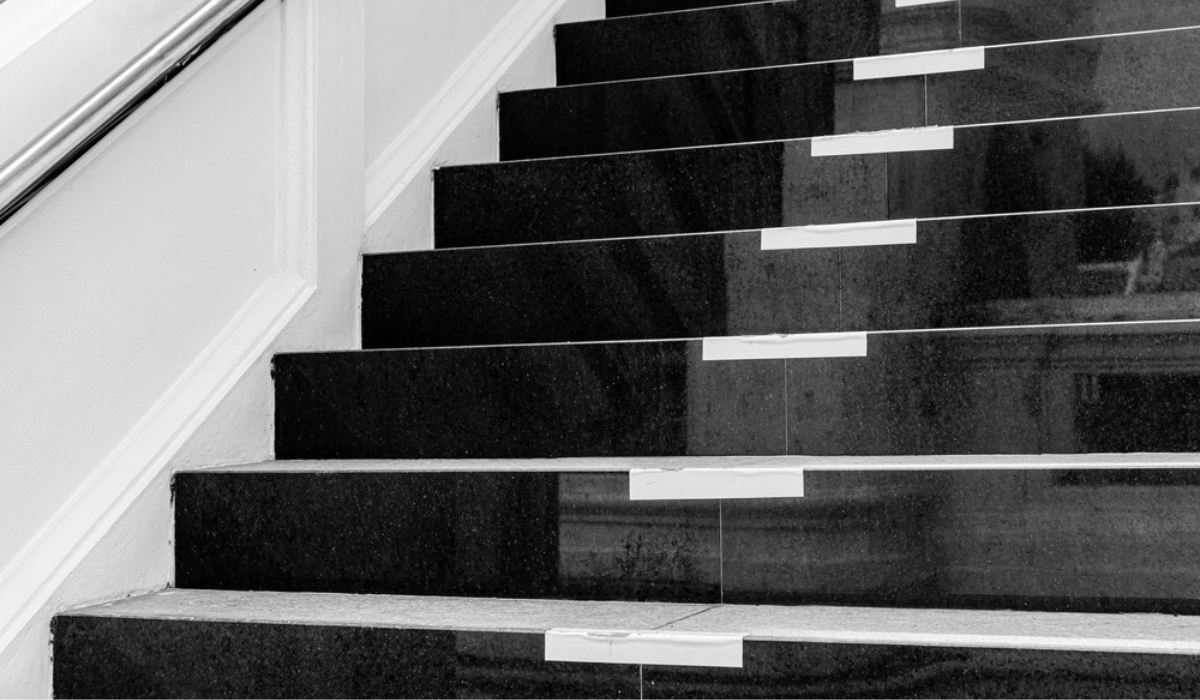A well-designed staircase adds to the aesthetic appeal of the space and ensures safety. Uneven steps cause discomfort and can be the cause of several accidents, and this is exactly why you need to ensure that your staircases are built with precise measurements and serve their functional and aesthetic purpose.
This article will to tell you how you can measure a staircase.

Source: Pinterest (thisiscarpentry.com)
Key terms related to stair steps
Before getting into the steps, there are a few terms that you should make yourself familiar with:
- Riser: Riser is the height of a staircase. It is measured vertically.
- Tread: Tread is the horizontal length that the staircase covers.
- Nosing: Nosing is the rounded edge that slightly curves at the corner of a tread. It adds aesthetic appeal while providing safety.
- Run: Run is the total horizontal length of the staircase. It is measured from one starting point to the end.
Measuring staircase steps: Necessary tools
Before starting with the measurements, there are some tools that you should collect:
- A measuring tape
- A framing square
- A level
- Pen and paper to note down measurements
- A straightedge
Measuring staircase steps: Process

Source: Pinterest (Decks.com)
Measure the total rise
The first step is to measure the total rise of your staircase. Keep the measuring tape at the very bottom of the last step and measure all the way up. This measurement is known as the total rise.
Calculate riser height
You can determine the rise height of individual steps by dividing the total riser height by the number of steps. If you are building a staircase in your home, the measurement must be around seven to eight inches.
Calculate tread depth
Now measure the total run depth of the staircase to determine the tread depth. To calculate the total run, start from the first step and measure till the bottom of the very last step. This horizontal distance is called the total run, and you can calculate the tread depth by dividing it by the total number of steps.
Establish nosing and overhang
You should add at least one extra inch for the overhang. It ensures safety and comfort and adds to the aesthetic as well.
Mark measurements
With the help of the necessary tools, mark the measurements on a stair stringer and cut it accordingly. You can use a circular saw to make the task easier for you.
FAQs
What should be the ideal riser-to-tread ratio?
The ideal riser height to tread depth ratio should be anywhere between 1:2 to 1:1.25.
Can I change the riser and tread measurements?
Changing the riser and tread measurements might cause several accidents, so you should always stick to standard measurements for all stair steps.
Are spiral staircases measured differently?
Yes, spiral cases are measured differently, but the riser height and tread depth should be in the same ratio as a normal staircase.
What if the total rise is not divisible by the desired number of steps?
In such a case, you can round off the fraction to the nearest whole number. You can also use standard stringer measurements.
| Got any questions or point of view on our article? We would love to hear from you. Write to our Editor-in-Chief Jhumur Ghosh at jhumur.ghosh1@housing.com |






